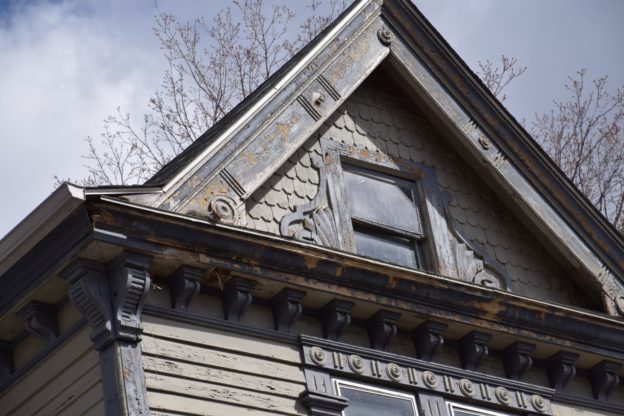With all of the old homes that are being torn down in our neighborhood in favor of density, it was distressing to come upon a gem that had some “architectural interest,” though it had fallen into disrepair. Next to an open lot – maybe two – that had already been cleared of the homes that used to be there, I was certain that Brian and I were looking at the future site of yet another apartment building that would be made with particle board. My heart sunk. I didn’t think that the house had much of a chance of escaping the wrecking ball.
I was wrong.
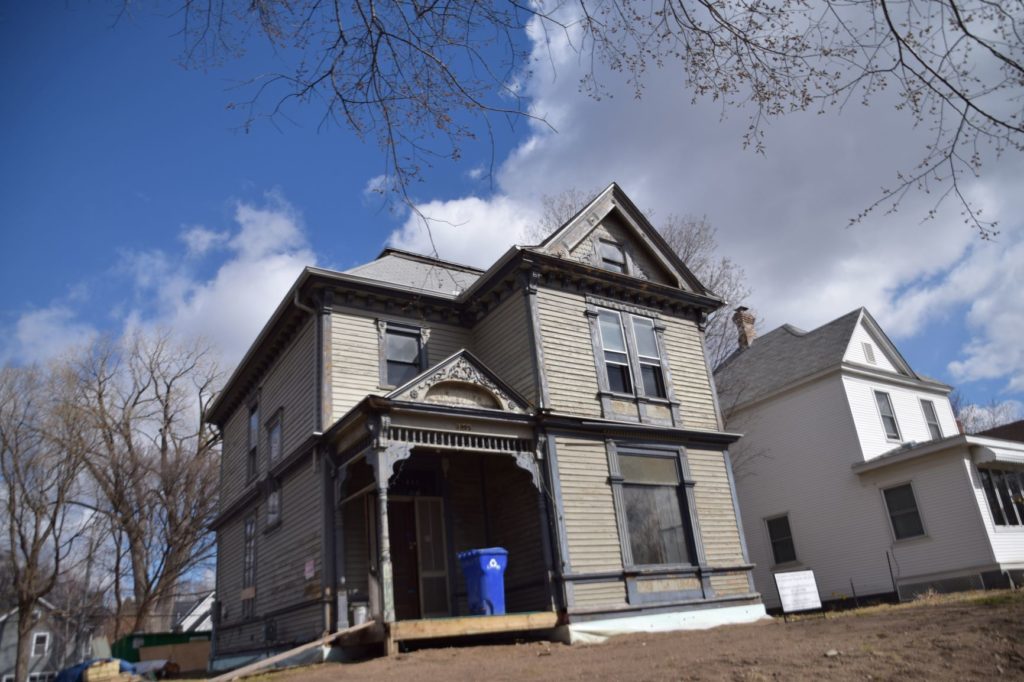
Recently, Brian noticed a crew working on the home. We confirmed that the place is being restored and I am relieved. For starters, the house is sitting on a brand new foundation after having been moved from the adjacent empty lot. On Sunday, two guys were busy framing a new garage.
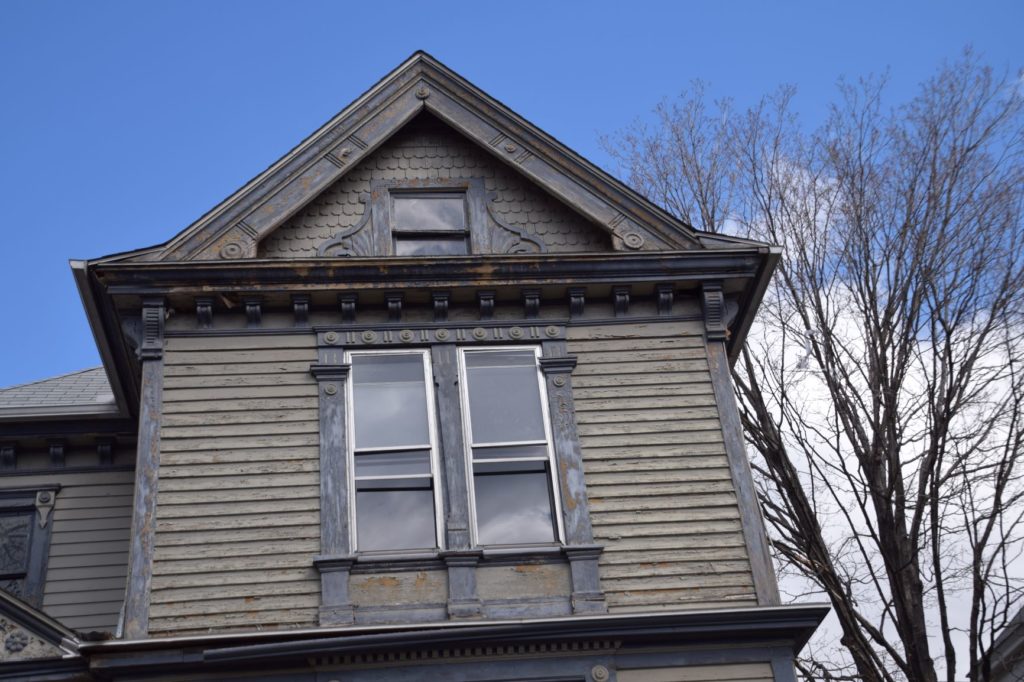
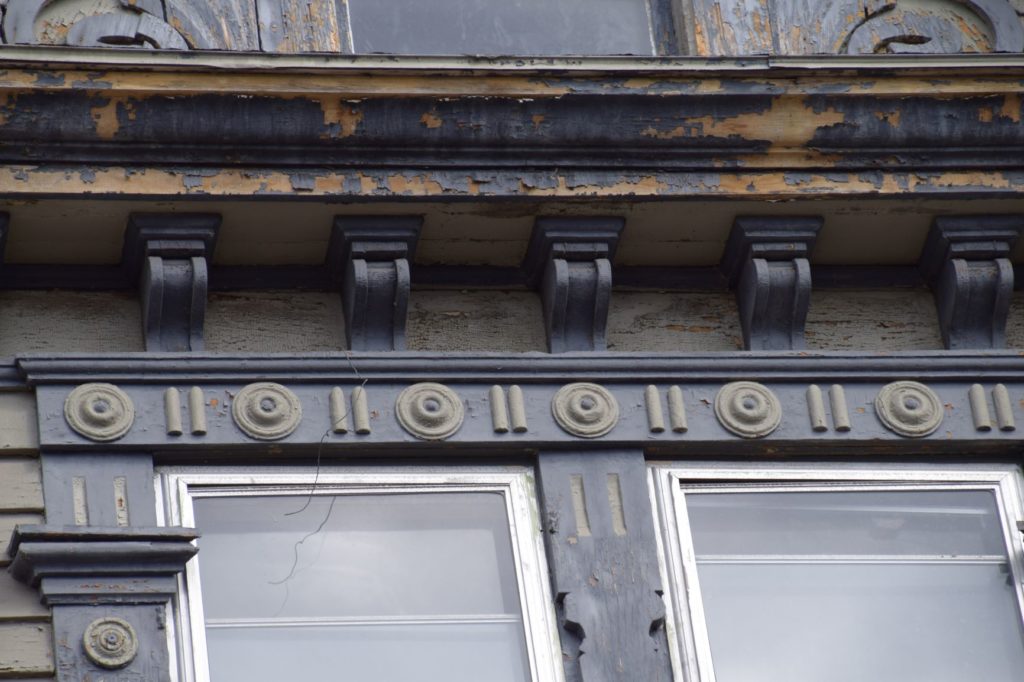
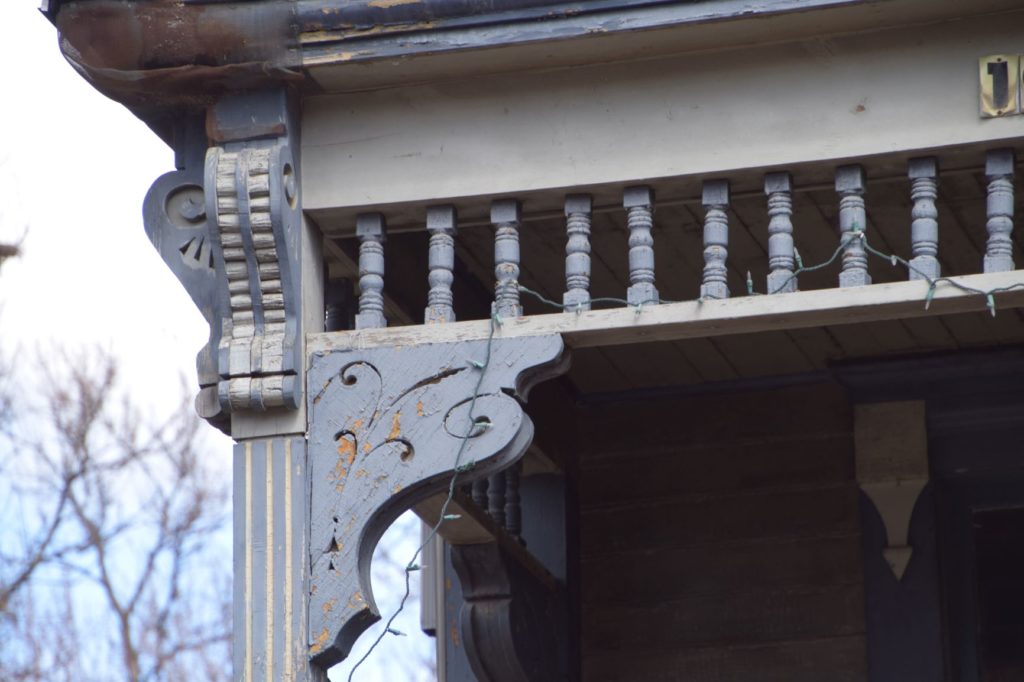
Density in the city core is supposed to be the environmentally responsible thing to do. However, if that’s the case, then why not require the buildings that replace old homes to meet LEED (Leadership in Energy and Environmental Design) standards? They should be state-of-the-art, zero-waste and carbon-free (almost free?) structures. Green roofs. Grey water. Passive solar. The works. They could be made to last for centuries. And they could be made for Minnesota. What do I mean by that?
Several years ago, I was in Virginia for a wedding. The area had been going through a crazy heat wave that ultimately took the power out for many of its residents, including the family of the bride. The hotel where several of us were staying was not effected and so there was some shifting to accommodate various guests, some of whom were getting baked out of the spare bedrooms where they were staying with the locals. Even the bride took over one of the rooms at the hotel so that she could get ready for the big day.
It was scary. And it made me wonder. When did we stop designing buildings based on the conditions of the natural environment versus the assumption that air conditioning (or heat) would always be a simple flip of the switch? Do we have to go back to adobe homes? Our own house that is just over a hundred years old was also built with the belief that we would never need to worry about the supply of cheap power or the consequences of using too much of it. So we have added insulation and taken some other steps to conserve energy. But now that we know what we know, when we build new housing, shouldn’t we build for the environment from the start?
And that is just considering the energy standards. There are also human standards. For example, we were talking to a couple at a friend’s party (pre COVID-19) who were telling us about their woes looking for a town home in a retirement community. The good ones have – ahem – community spaces. And this couple was holding out for one such place. According to them, the newer developments treated things like lounges and meeting rooms as wasted space, which is to say that they were not included. While the two embraced downsizing, retreating to their pod where they would feel isolated wasn’t what they had in mind when they decided to retire.
There is also green space to consider, which is another aspect of the human standard. New buildings should have green rooftops. Courtyards. Enough grass for a picnic. Balconies. Playgrounds. We cannot concern ourselves with this, right? However, we do concern ourselves with how many parking spaces there will be, which is funny since density is packaged with this idea that the new arrivals will use the public transit and therefore should eliminate any concerns about the impact on traffic. In the meantime, in one of the apartments going up near us, eliminating balconies from the plan is supposed to assuage the fears of the neighbors who see the development for what it is. College housing. Elsewhere, another development received a variance that essentially traded green space for parking.
It feels like people are pitted against each other in weird ways and bad decisions come out of that. I wonder if it’s because economic problems are easier to solve than human ones (I think I am channeling Brian here because this is a theme for him.). If I only have to think about the cost per square foot, it is easy to find a solution. But if I have to ask myself whether I want my grandmother to live in a place where there will be almost no chance that she will get to know her neighbors or whether a little kid wouldn’t be better off growing up in a place where there are trees and grass – those are bigger, messier questions that will depend more on stuff that cannot be expressed algebraically. These are values that exist outside of ledgers.
A while ago, I recall reading about a family that was selling their house on Marshall Avenue to a developer. The neighbors were upset for all of the reasons you would expect. But the sellers insisted that they had no choice. They needed the money to retire (it might have been a case of a parent who needed to move to assisted living, but the point here is the same). I just hope that they were able to find a place where the developer did not skimp on the community space because that is what the market dictated. Now, why people are in the position of making economic choices that they would rather not make is another issue. But I mention it here because long term care security and a broken health care system are a part of this story that should be explored further.
Finally, I have a question about how the neighbors are economically impacted by these developments. For example, down the street from where I live, a property sold for over a million dollars to a developer. The one on the corner across from it sold for 700,000 dollars. But what if suddenly having an apartment building next to your house makes your property value go down? Or what if, you can no longer see the sky when you look out of your office window and this really depresses you? What if it shades your tomato plant? Should you be compensated for this? Conversely, do these over-market-value sales have an impact on my property taxes, since home valuations are based on recent sales of comparable homes in the area? Or should I expect my property taxes to go down since there will be more people to share costs?
This is not a rant against density. However, it is an observation that it is not the only thing and it can be taken to an extreme. The airlines serve as a cautionary tale. Over the years, we have watched legroom on flights disappear. And now just as we thought that it would have been impossible to jam another row of seats into economy class, the industry has been considering yet another tier of traveling where passengers would essentially stand for the duration of the trip. Yep. Too far.
